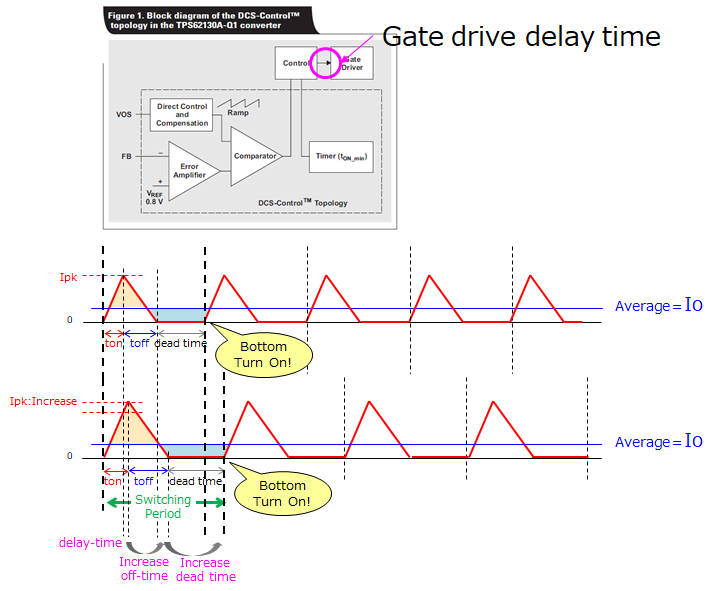Other Parts Discussed in Thread: TPS62130, TLV62095, TPS62864
Please tell me the reason why switching frequency fluctuates by a load condition.
For example, in TPS62366A, ton becomes the constant value in expression (3) of the data sheet, but switching frequency changes at 1A and 4A in figure 38.
I understand that switching frequency changes with PFM mode, why is it that switching frequency changes with PWM mode?



